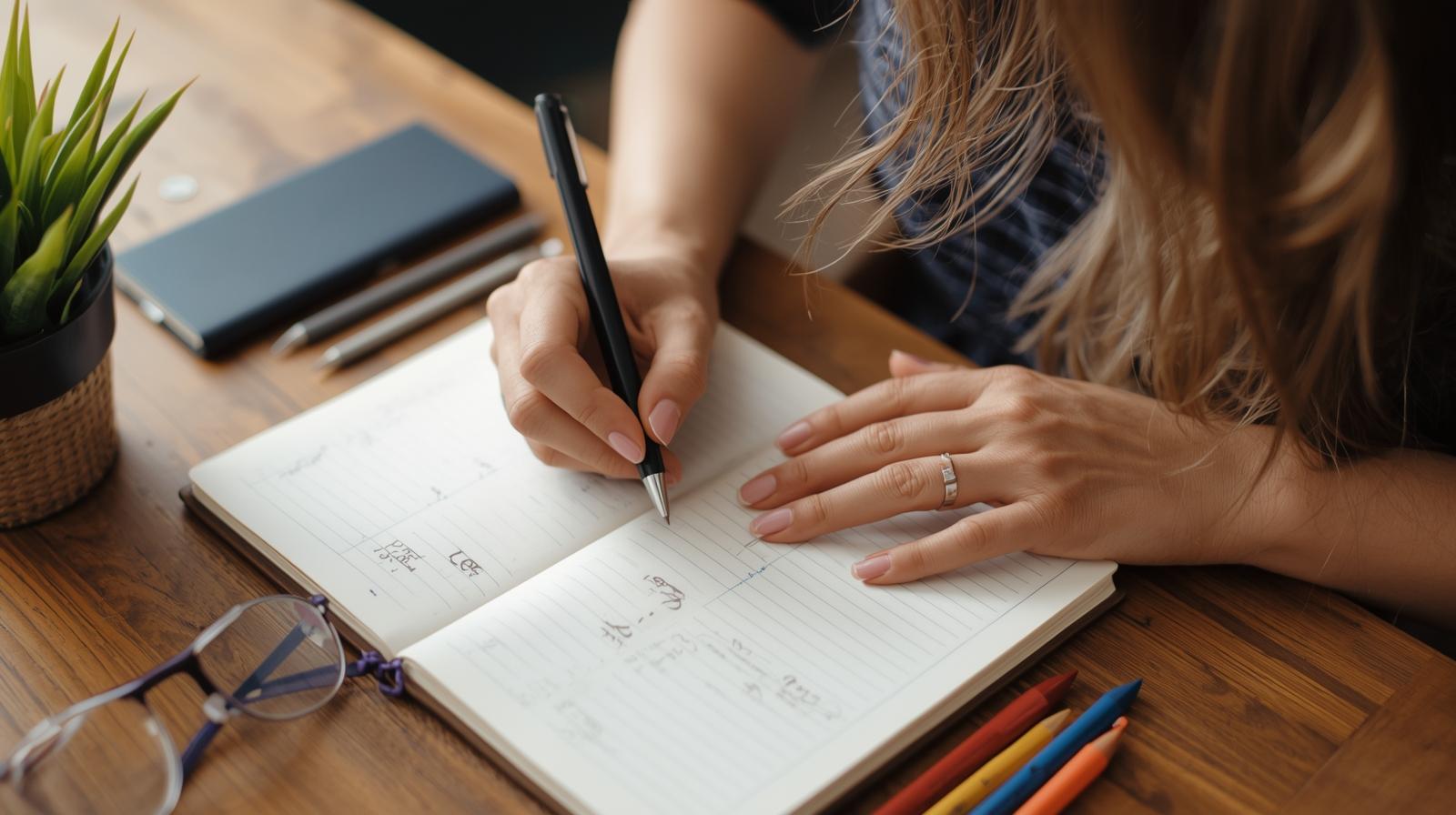If you read the first post in this series, you already know that a bullet journal is much more than an organizational tool—it's a space for internal listening, reflection, and transformation. Now that you understand the power of a bullet journal for self-awareness, it's time to get started and create your own.
In this article, we'll guide you step by step through creating a bullet journal focused on self-awareness. From choosing a notebook to the most important pages, you'll learn how to create a system that reflects who you are and helps you understand yourself better.
Where to start?
The beauty of bullet journaling lies in its simplicity. All you need is:
A notebook (preferably dotted, but plain or gridded can be used)
A pen (or several, if you like to color)
A desire to get to know yourself better
There's no one-size-fits-all. Your bullet journal should be functional for you. It can be minimalist or full of drawings, organized or chaotic. The important thing is that it invites you to write and reflect.
Basic Bullet Journal Structure:
Before creating pages focused on self-discovery, it's important to understand the basic structure of a BuJo. It serves as the foundation for everything you'll build:
1. Index
Reserve the first few pages for the index. It helps you easily locate your collections and records.
2. Future Log:
Here you can jot down commitments, goals, and important events for the coming months. It's great for visualizing what's coming up.
3. Monthly Log:
Create an overview of the month with a calendar and to-do list. You can include personal goals and monthly intentions.
4. Daily Log:
Write down tasks, events, thoughts, and reflections from the day. This is the most lively part of your Bullet Journal, or BuJo, as it's affectionately known.
🧠 Pages focused on self-awareness:
Now comes the most special part: the collections and pages that help you get to know yourself better. Here are some suggestions you can adapt to your style:
1. Mood Tracker
Create a table or drawing with the days of the month and colors to represent your emotional state. Over time, you'll notice patterns and triggers.
2. Gratitude Journal
Write down three things you're grateful for daily or weekly. This simple practice changes your perspective and strengthens your self-esteem.
3. Weekly Reflections
Set aside time to review your week:
What made you happy?
What bothered you?
What did you learn?
What would you like to change?
4. Personal Goals and Values
List your core values and short-, medium-, and long-term goals. This helps you align your actions with what truly matters to you.
5. Venting Pages
Have a clear space to write whatever comes to your mind and heart. When you're overwhelmed, anxious, or confused, pour it all out there. It's liberating.
6. Cycles and Patterns
Create a page to observe hormonal cycles, sleep patterns, eating patterns, or productivity. This helps you understand your body and mind.
🎨 Style and Aesthetics:
Does it need to be pretty?
No! A bullet journal doesn't have to be artistic to work. But if you enjoy drawing, coloring, or decorating, this can make the experience even more enjoyable.
If you prefer something simpler, just use a pen and straight lines. The important thing is that the look doesn't prevent you from using the notebook. It should be an invitation, not a demand.
⏰ How to Stay Consistent
Many people start bullet journaling with excitement but eventually give up. To avoid that, here are some tips:
Set a routine: Dedicate 10 minutes a day or 30 minutes a week to journaling.
Start small: Don’t try to do everything at once. Begin with 2 or 3 pages and expand gradually.
Be kind to yourself: Don’t aim for perfection. Your BuJo is your space for freedom.
Revisit your pages: Rereading what you’ve written is a key part of the self-discovery process.
💡 Bonus Tip: Use Your BuJo to Support Therapy
If you’re in therapy or coaching, your bullet journal can be a powerful companion. You can:
Record insights from sessions
Write down therapeutic tasks
Track emotions between appointments
Bring your journal to share with your therapist
This deepens the process and helps you stay focused on your growth.
✨ Conclusion: Your Notebook, Your Journey
Creating a bullet journal focused on self-knowledge is like opening a door to your inner world. It’s an invitation to listen, reflect, and transform. And the best part? You don’t need anything fancy — just paper, a pen, and the courage to meet yourself.
If you’re ready to begin, choose your notebook, set up your first pages, and dive into the journey. Your BuJo will be your companion, your mirror, and your safe space.
